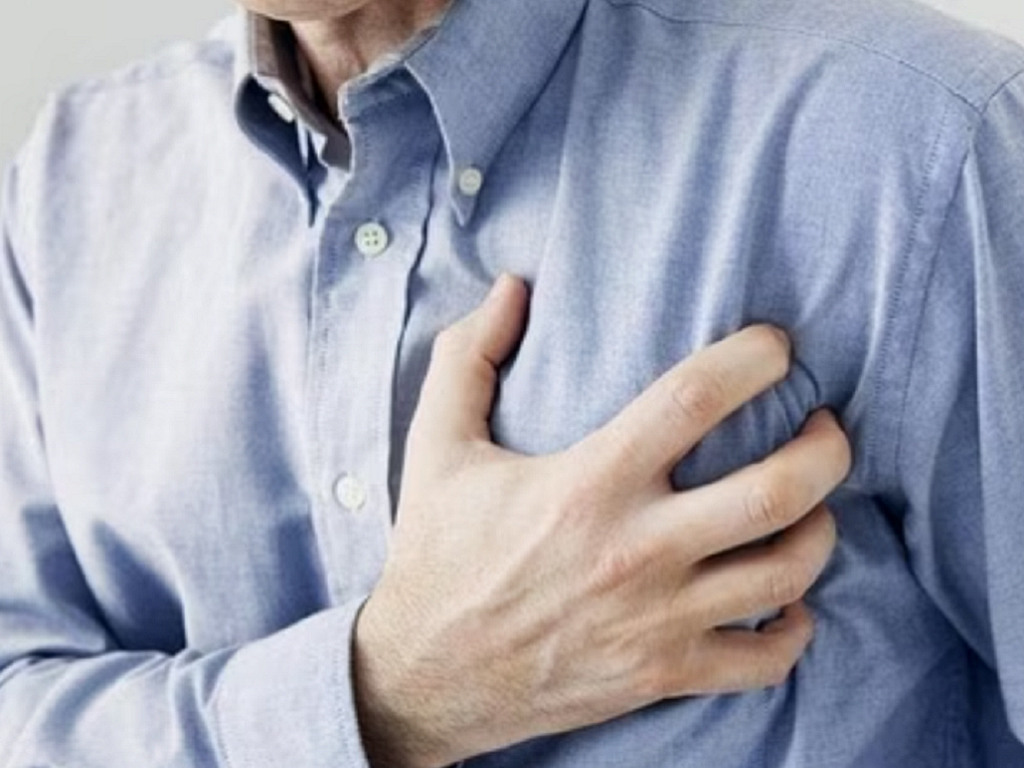Starting the day with health news, readers can also read more articles: Is it okay to have frequent hypoglycemia?; Shoulder pain, how to treat it?; Dizziness and nausea are signs of what disease? ...
7 types of cancer that are likely to occur in men from the age of 40, how to prevent them
As you age, your risk of developing certain cancers increases. Smoking and drinking too much alcohol are often contributors to a man's cancer risk. Genetics and family history also play a role.
Here are 7 common cancers that are likely to occur in men over 40:

Smoking and drinking too much alcohol often contribute to increased cancer risk in men.
Prostate cancer. This is a common concern among men, especially older men. Risk factors include age and family history.
Early stages often have no symptoms, so regular check-ups and PSA tests are needed. Symptoms may include difficulty urinating and pelvic pain in advanced stages. Prevent prostate cancer with a balanced diet and regular exercise.
Colorectal cancer. This is a fairly common cancer in men, and often develops from precancerous polyps. Risk factors include age, family history, and certain genetic conditions. Symptoms of colorectal cancer can include changes in bowel habits, blood in the stool, and abdominal discomfort.
Regular screening, such as colonoscopies, can help detect the disease early. Eating plenty of fiber and exercising regularly can help prevent the disease. Recognizing symptoms, screening early, and adopting a healthy lifestyle are important to reduce the risk of colorectal cancer in men and improve overall outcomes. Readers can read more about this article on the health page on January 23 .
Is it okay to have frequent hypoglycemia?
Dizziness, blurred vision, sweating, nausea, and tremors are typical symptoms of hypoglycemia. If not treated promptly, hypoglycemia can cause falls, unconsciousness, and even traffic accidents. In the long term, hypoglycemia can also cause many other negative health effects.
Hypoglycemia is a health condition characterized by blood sugar levels falling too low. Blood glucose levels falling below 70 mg/dL are considered hypoglycemia.

Prolonged hypoglycemia may increase risk of heart disease
Factors that lead to hypoglycemia include poor blood sugar control in people with diabetes, taking too much insulin, eating too little, skipping meals, or exercising too hard. Hypoglycemia can cause negative health effects including:
Seizures. Blood sugar levels that drop too low can cause seizures. This condition is rare but dangerous. People with diabetes are at significantly higher risk of having seizures due to low blood sugar than healthy people.
Unconsciousness. When blood sugar drops too low, the person will fall unconscious. This condition can be life-threatening. The next content of this article will be on the health page on January 23.
Shoulder pain, how to treat?
Shoulder pain is a health problem that can occur at any age, especially in the elderly. One of the most common causes is a rotator cuff injury. Depending on the cause and severity of the pain, there will be appropriate treatment.
The rotator cuff is a group of muscles and tendons that surround the shoulder joint. An injury to the rotator cuff can cause pain, weakness, and reduced range of motion. Another common cause of shoulder pain is arthritis. Older adults are at higher risk for this condition.

Rotator cuff injuries are a common cause of shoulder pain.
Shoulder pain can be well treated with the following methods:
Exercise and stretch. Gentle shoulder exercises and stretches are natural ways to relieve shoulder pain in mild cases. Proper exercise not only helps relieve shoulder and neck tension but also helps reduce stiffness in joint movements, thereby improving range of motion and flexibility.
Apply heat and cold. This is another natural treatment that people with shoulder pain can do at home without medical intervention. Cold is often used immediately after an injury, such as a fall or lifting something heavy, to reduce swelling and inflammation.
Meanwhile, warm compresses have the effect of increasing blood flow and reducing stiffness when moving joints. Start your day with health news to see more content of this article!
Source link


![[Photo] April Festival in Can Tho City](https://vstatic.vietnam.vn/vietnam/resource/IMAGE/2025/4/10/bf5ae82870e648fabfbcc93a25b481ea)
![[Photo] Prime Minister Pham Minh Chinh commends forces supporting Myanmar in overcoming earthquake consequences](https://vstatic.vietnam.vn/vietnam/resource/IMAGE/2025/4/10/e844656d18bd433f913182fbc2f35ec2)



![[Photo] Opening of the 11th Conference of the 13th Party Central Committee](https://vstatic.vietnam.vn/vietnam/resource/IMAGE/2025/4/10/f9e717b67de343d7b687cb419c0829a2)
























![[Photo] Reliving the heroic memories of the nation in the program "Hanoi - Will and belief in victory"](https://vstatic.vietnam.vn/vietnam/resource/IMAGE/2025/4/10/19ce7bfadf0a4a9d8e892f36f288e221)




























































Comment (0)